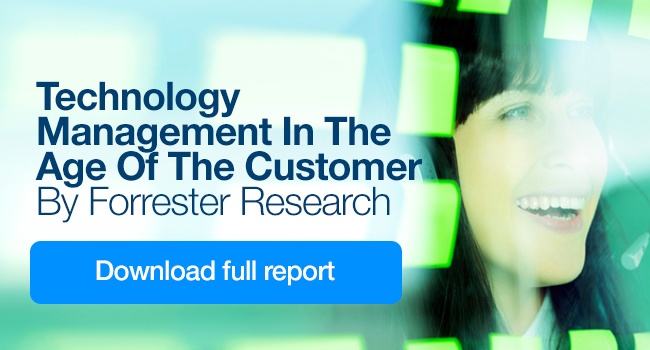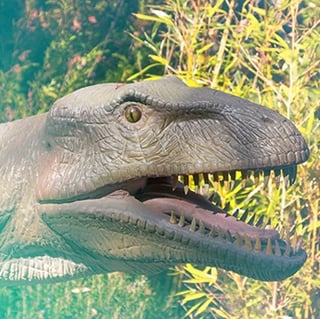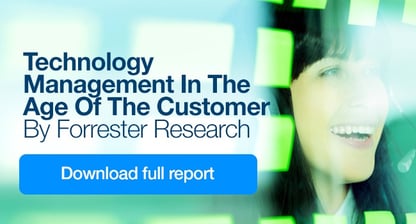The Evolution of the CIO in the Age of the Customer

Around 65 million years ago half the planet’s species became extinct because their evolutionary development couldn’t keep pace with changing climate conditions.
We’re facing another extinction scenario today – and I’m not talking about climate change (we’ll leave that  can of worms for the scientists). The traditional CIO and IT department might be going the way of the dinosaurs because they can’t keep up with the tectonic shifts happening with technology.
can of worms for the scientists). The traditional CIO and IT department might be going the way of the dinosaurs because they can’t keep up with the tectonic shifts happening with technology.
And that might be a good thing.
The Age of the Customer
The mass extinction of the dinosaurs marked the end of the cretaceous period and the beginning of the Paleogene period.
Today, we’re entering a new period as well, the Age of the Customer. As CEO of Forrester Research George Colony and Forrester Research Director Peter Burris explain in their recent report entitled Technology Management in the Age of the Customer, the age of the customer is:
“A 20-year business cycle in which the most successful enterprises will reinvent themselves to systematically understand and serve increasingly powerful customers.”
Forrester describes the prototypical modern customer, roaming the globe in virtual packs, empowered by mobile devices, social media and digital tools to extract quality, service concessions, and lodging public complaints that sometimes go viral.
Today’s technology-wielding customer is the new predator preying on the slow-to-change corporation encumbered by the traditional IT department that is only concerned with infrastructure, desktop and email maintenance, internal applications and keeping the lights on.
But what’s the solution? According to Forrester, CIOs need to think more like marketers.
“We believe existing technology organizations and executives must broaden their technology management agendas beyond infrastructure management and internal operations (IT) to include work centered on acquiring and retaining customers.”
In addition to keeping the lights on, the CIO of today has to support the BT agenda, which focuses on providing superior customer experiences.
What does supporting the BT agenda mean?
What exactly does it mean to support the BT agenda? Colony and Burris lay out eight changes CIOs need to make in order to stay relevant.
- Support great software - or die. Today it’s all about the customer experience, and companies must focus on supporting technologies to win, serve and retain customers. This means having and supporting the best customer-facing software.
- Shift from products to services. We live in the age of the customer, and customers prefer to consume services rather than products. Think leasing a car instead of buying. The “as-a-service” movement is a leading indicator in this direction.
- Customer insight will boost shareholder value. Your company’s competitiveness will depend on the accuracy, precision and depth of your customer insight.
- The re-emergence of the CTO. Forester said the CTO will make a come-back to head the IT portion of the technology stack, enabling the CIO to focus on customer-facing challenges.
To learn about the other four changes to the BT agenda, and get a detailed overview of the challenges and solutions facing CIOs in today’s customer-centric environment, download the free Forrester report below.



